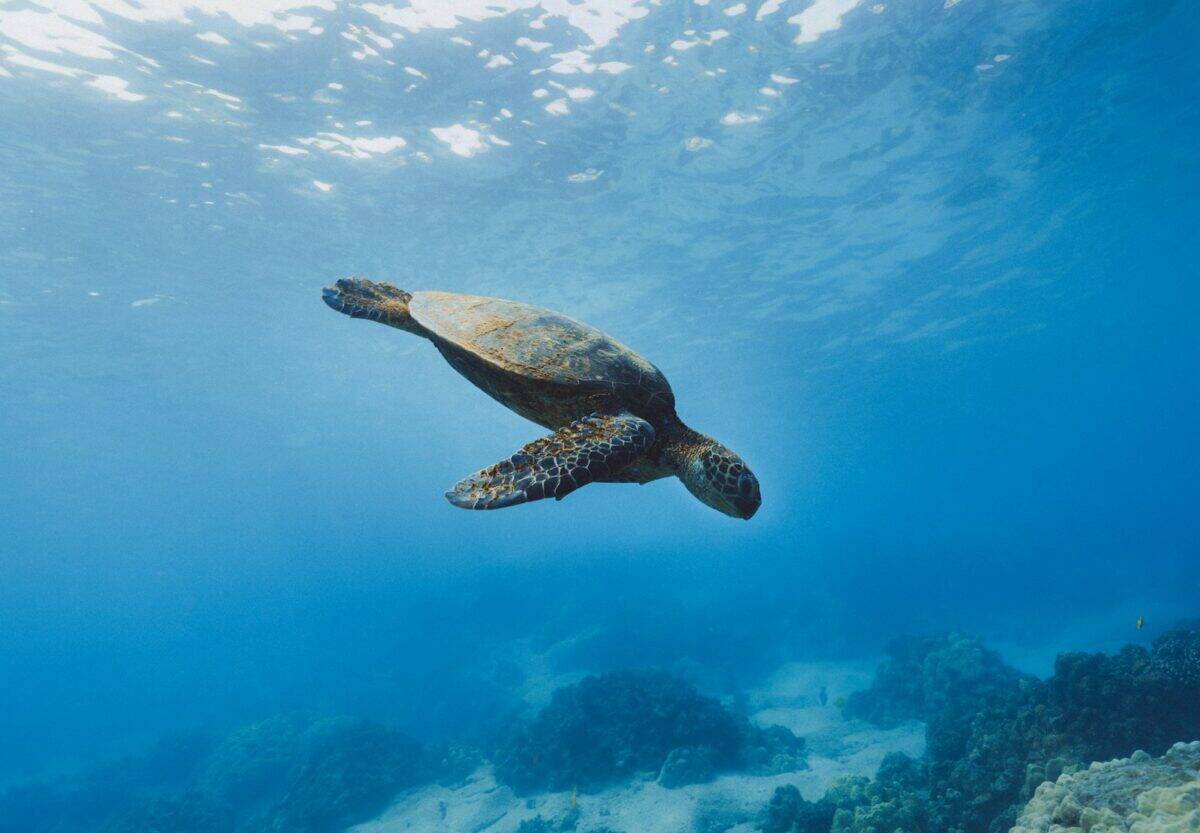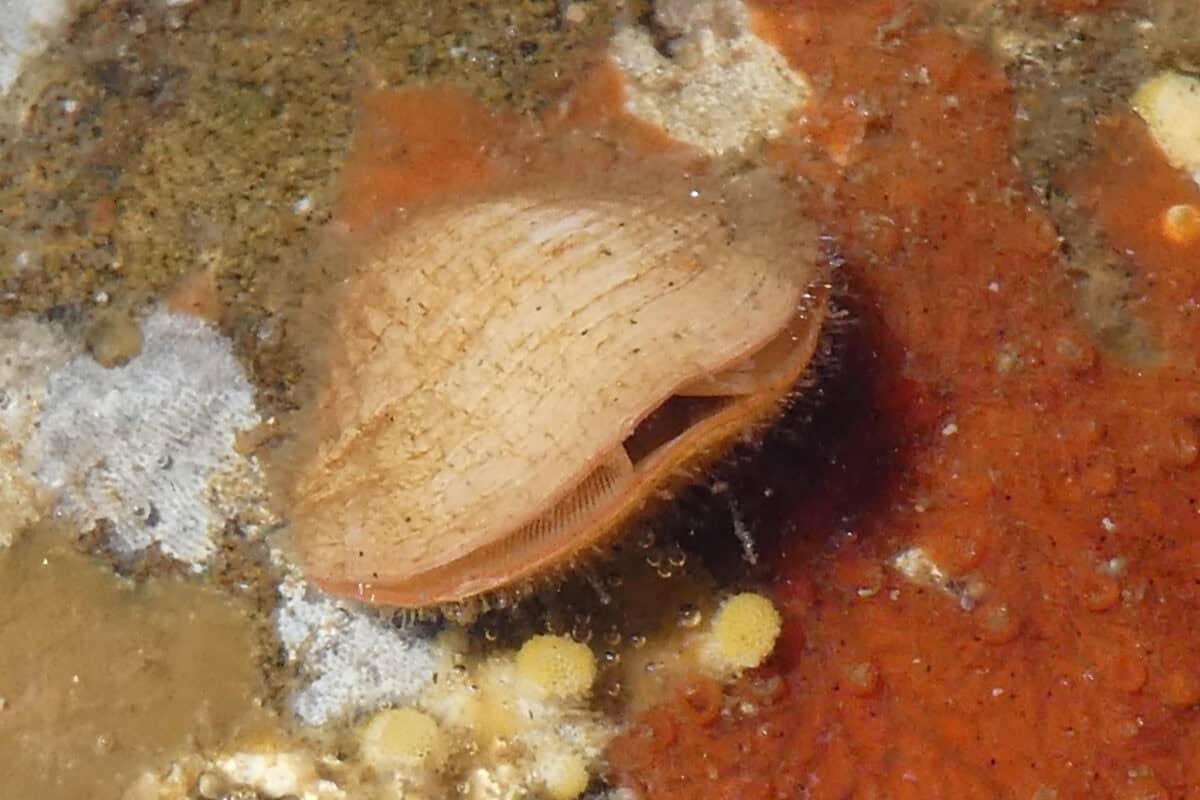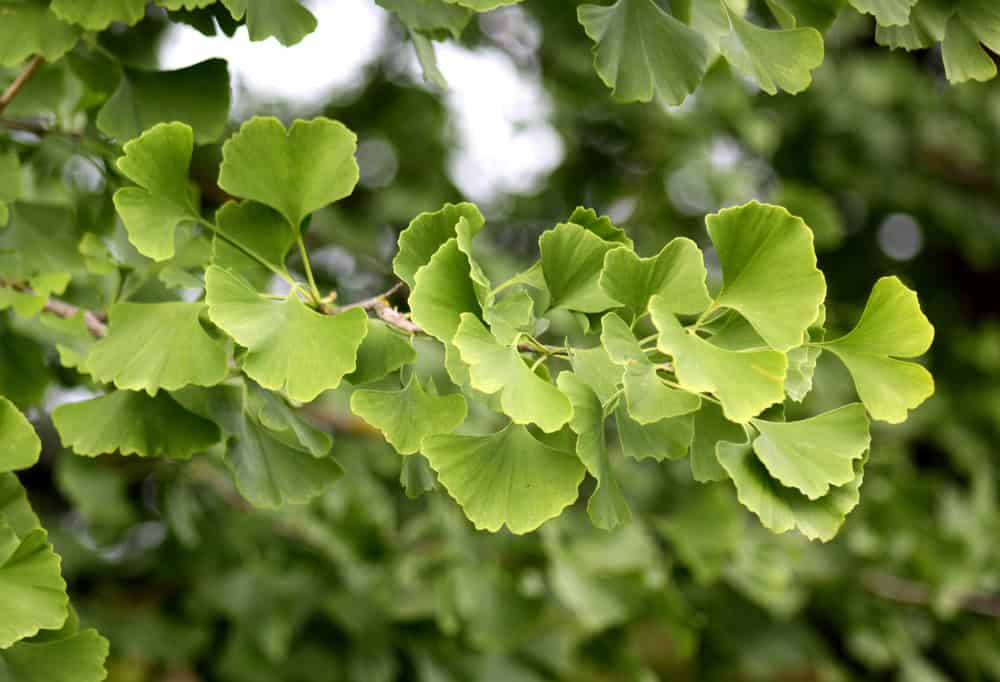When we think about the age of dinosaurs, we often picture a world completely different from our own. The mighty Tyrannosaurus rex, soaring Pterodactyls, and armored Stegosaurus dominated landscapes that seem alien to modern eyes. But what many people don’t realize is that some creatures that shared the planet with these prehistoric giants are still with us today, having survived the catastrophic extinction event that wiped out the non-avian dinosaurs 66 million years ago. These living fossils provide a remarkable window into Earth’s distant past and demonstrate the incredible resilience of certain evolutionary lineages. From the depths of our oceans to remote forest habitats, these survivors have witnessed the rise and fall of the dinosaurs and continued to thrive through millions of years of planetary change. Let’s explore 12 fascinating creatures that lived alongside dinosaurs and continue to exist in our modern world.
Horseshoe Crabs 445 Million Years of Survival

Horseshoe crabs are often called “living fossils” for good reason—they have remained virtually unchanged for over 445 million years, predating even the dinosaurs by hundreds of millions of years. These remarkable marine arthropods were already ancient when the first dinosaurs appeared during the Triassic period around 230 million years ago. With their distinctive horseshoe-shaped carapace and long, pointed tail (called a telson), they look like creatures from another time. Horseshoe crabs aren’t actually true crabs but are more closely related to spiders and scorpions. They survived multiple mass extinctions, including the Permian-Triassic extinction (the most severe in Earth’s history) and the Cretaceous-Paleogene extinction that eliminated the dinosaurs. Today, they can be found along the shallow coastal waters of the Atlantic Ocean and Gulf of Mexico in North America, and various parts of Asia. Their blue, copper-based blood has proven invaluable to modern medicine for testing the safety of vaccines and medical devices, creating an ironic situation where these prehistoric survivors now help ensure human survival.
Crocodilians Ancient Reptilian Predators

Perhaps the most famous dinosaur contemporaries still alive today are crocodilians—a group that includes crocodiles, alligators, caimans, and gharials. These formidable predators first appeared about 200 million years ago during the Triassic period and shared habitats with many dinosaur species for over 135 million years. While dinosaurs underwent significant evolutionary changes, crocodilians maintained a remarkably similar body plan and ecological niche throughout this vast timespan. Their semi-aquatic lifestyle, armored bodies, and powerful jaws made them efficient predators in prehistoric waterways, just as they are today. Crocodilians possess several adaptations that may have helped them survive the K-Pg extinction event, including their ability to go extended periods without food, their aquatic lifestyle (which provided some protection from the immediate effects of the asteroid impact), and their broad diet. Modern crocodilians represent the closest living relatives to birds, which are themselves the last surviving dinosaur lineage. This relationship is evident in their shared features like nest-building behavior, parental care, and similar heart structure.
Tuatara The Last of Their Kind

The tuatara of New Zealand represents the sole survivor of an entire order of reptiles—Rhynchocephalia—that flourished during the age of dinosaurs. While superficially resembling lizards, tuataras belong to a completely separate evolutionary lineage that diverged from other reptiles over 250 million years ago. During the Mesozoic era, their relatives were diverse and widespread, but today, only the tuatara remains, confined to a few small islands off New Zealand’s coast. These remarkable reptiles possess several primitive features that harken back to their ancient origins, including a unique “third eye” (a light-sensitive organ on top of their head), vertebrae with primitive structure, and teeth fused directly to the jawbone rather than set in sockets. Tuataras are extremely long-lived, potentially reaching ages of over 100 years, and have one of the slowest growth rates and lowest metabolic rates of any reptile. Their slow reproductive rate—females lay eggs only once every 2-5 years—makes them vulnerable to extinction in the modern world, despite having survived for hundreds of millions of years through major global catastrophes.
Sharks Predators from the Deep Past

Sharks have patrolled Earth’s oceans for over 450 million years, making them one of the oldest vertebrate groups still in existence. By the time dinosaurs evolved, sharks had already been evolving for more than 200 million years and had developed many of the adaptations that make them such successful predators today. While modern shark species aren’t identical to those that swam alongside dinosaurs, certain lineages have remained remarkably stable. The frilled shark (Chlamydoselachus anguineus), with its primitive-looking features and “living fossil” status, represents a lineage dating back at least 80 million years. Similarly, the goblin shark (Mitsukurina owstoni) belongs to a family that has existed for around 125 million years. Sharks’ evolutionary success stems from their highly efficient design: a streamlined body, powerful sensory systems, regenerating teeth, and a cartilaginous skeleton that combines strength with flexibility. Their ability to inhabit deep ocean environments likely provided protection during extinction events that devastated shallower marine ecosystems. Today, despite surviving countless geological and climatic changes over hundreds of millions of years, many shark species face their greatest threat from human activities, including overfishing and habitat destruction.
Nautilus The Shelled Cephalopod

The chambered nautilus represents one of the most ancient lineages of cephalopods, a group that includes octopuses, squids, and cuttlefish. Nautiloids first appeared in Earth’s oceans over 500 million years ago, and the modern nautilus still retains many primitive features of its ancestors that lived during the dinosaur era. Their distinctive spiral shells, divided into chambers filled with gas for buoyancy control, have remained fundamentally unchanged for millions of years. While other related groups like ammonites (which also had coiled shells) went extinct alongside the dinosaurs, nautiluses somehow persisted. These “living fossils” inhabit the deep waters of the Indo-Pacific, where they use their approximately 90 tentacles to capture prey and their primitive pinhole eye (lacking a lens) to navigate their environment. Unlike their more advanced cephalopod relatives, nautiluses have a relatively simple brain and shorter lifespan, typically living 15-20 years. Their slow reproductive rate—females lay just a few eggs per year, which take around 12 months to hatch—makes them particularly vulnerable to modern threats like overfishing. Despite surviving multiple mass extinctions throughout Earth’s history, all nautilus species are now considered threatened due to harvesting for their beautiful shells and meat.
Turtles and Tortoises Armored Survivors

Turtles and tortoises first appeared during the Triassic period, approximately 220 million years ago, and coexisted with dinosaurs throughout the Mesozoic era. Their signature adaptation—the protective shell formed by fused ribs and vertebrae—proved to be an evolutionary innovation that has stood the test of time. This defensive armor, combined with their ability to retract vulnerable body parts inside, likely contributed to their survival through the K-Pg extinction event. The turtle lineage has remained remarkably stable in its basic body plan, though modern species have adapted to diverse habitats from tropical seas to arid deserts. Some living turtle species have incredibly ancient origins—the leatherback sea turtle (Dermochelys coriacea), for instance, belongs to a lineage that diverged from other turtles about 100-150 million years ago. Similarly, the alligator snapping turtle (Macrochelys temminckii) represents a family dating back around 80 million years. These reptiles also demonstrate impressive longevity, with some tortoises capable of living well over 100 years, providing a living connection to a time closer to the age of dinosaurs. Despite their evolutionary resilience, many turtle and tortoise species now face extinction threats due to habitat loss, pollution, and harvesting.
Lungfish Breathing Air for 400 Million Years

Lungfish represent one of the most ancient lineages of vertebrates still swimming in our waters, with fossils dating back over 400 million years. These remarkable fish were already well-established when dinosaurs first evolved and have changed relatively little since. As their name suggests, lungfish possess both gills and primitive lungs, allowing them to breathe air—an adaptation that likely helped them survive in oxygen-poor waters and may have played a role in their long-term survival. Today, only six species of lungfish exist, found in South America, Africa, and Australia. The Australian lungfish (Neoceratodus forsteri) is particularly notable as it represents the oldest living vertebrate lineage on the continent, having existed there for at least 100 million years while dinosaurs roamed the southern landmass of Gondwana. During drought conditions, African and South American lungfish can burrow into mud and enter a state of estivation, slowing their metabolism dramatically and surviving without food or water for years if necessary—another adaptation that may have helped them weather extinction events. Lungfish occupy an important evolutionary position as close relatives to the ancestors of tetrapods (four-limbed vertebrates), making them crucial to understanding how life transitioned from water to land.
Brachiopods Ancient Ocean Dwellers

Brachiopods are marine animals that might be mistaken for clams or oysters, but they represent an entirely different phylum that was once among the most abundant creatures in Earth’s oceans. These filter-feeding organisms appeared over 540 million years ago and reached their peak diversity during the Paleozoic era. While thousands of brachiopod species existed during the time of the dinosaurs, only about 400 species survive today, making them a diminished but persistent reminder of Earth’s ancient ecosystems. Brachiopods possess two shells (valves) that protect their soft bodies, but unlike bivalve mollusks, their valves are arranged top-and-bottom rather than left-and-right. They attach themselves to the seafloor using a fleshy stalk called a pedicle and filter food particles from the water with a specialized organ called a lophophore. Some modern genera, like Lingula, have remained virtually unchanged for over 400 million years, earning them living fossil status. These resilient creatures survived multiple mass extinctions, including the end-Permian event that eliminated approximately 96% of marine species and the K-Pg event that claimed the dinosaurs. Today, brachiopods are found primarily in cooler, deeper waters, where they continue their ancient lifestyle largely unchanged from when they shared the oceans with marine reptiles like plesiosaurs and ichthyosaurs.
Coelacanths The Fish That “Came Back from the Dead”

Perhaps the most famous “living fossil” is the coelacanth, a lobe-finned fish that was thought to have gone extinct alongside the dinosaurs until a living specimen was dramatically discovered off the coast of South Africa in 1938. This discovery stunned the scientific community, as coelacanths were previously known only from fossils dating back 360 million years, with the most recent fossil specimens dating to about 66 million years ago. These remarkable fish can grow up to 6.5 feet long and possess several distinctive primitive features, including a hinged skull that allows them to open their mouths extremely wide and fleshy, lobe-like fins that move in an alternating pattern resembling a four-limbed walking gait. Only two species survive today: the African coelacanth (Latimeria chalumnae) and the Indonesian coelacanth (Latimeria menadoensis), both living in deep, rocky marine habitats. Coelacanths belong to a group called sarcopterygians or lobe-finned fishes, which includes the ancestors of all tetrapods—making these fish closer relatives to humans than to most other fish. They possess several unique adaptations, including an electrosensory rostral organ for detecting prey and a notochord (a primitive spinal cord) rather than a true vertebral column. Despite surviving for hundreds of millions of years, both coelacanth species are now critically endangered due to accidental capture in deep-sea fishing operations.
Ginkgo Trees The Last of an Ancient Plant Lineage

When dinosaurs roamed the Earth, forests were filled with diverse ginkgo species, recognizable by their distinctive fan-shaped leaves. Today, only a single species—Ginkgo biloba—remains, representing the sole survivor of an entire division of plants that has existed for over 290 million years. During the Jurassic and Cretaceous periods, ginkgoes were widespread across the globe, with fossils found on every continent. These resilient trees witnessed the rise and fall of the dinosaurs and somehow persisted through the K-Pg extinction event that drastically altered Earth’s ecosystems. Ginkgoes possess several primitive features that reflect their ancient origins, including motile sperm (unusual for a seed plant) and separate male and female trees. Their distinctive leaves have a unique vein pattern not found in any other living plant, and fossilized ginkgo leaves from 100 million years ago are virtually identical to those on modern trees. Ginkgoes demonstrate remarkable hardiness—they are resistant to pests, disease, and pollution, and can live for over 1,000 years. The species was preserved in China through cultivation in Buddhist temple gardens, and may actually have gone extinct in the wild before being saved by human intervention. Today, ginkgoes are popular ornamental trees worldwide and are used in traditional medicine, making them a living connection to the forests dinosaurs once inhabited.
Cycads Palm-Like Plants from the Mesozoic

Cycads represent another plant group that was far more diverse and widespread during the age of dinosaurs than they are today. These palm-like plants first appeared about 280 million years ago and reached their evolutionary peak during the Jurassic period (201-145 million years ago), when they were so common that the Jurassic is sometimes called the “Age of Cycads and Dinosaurs.” With their stout trunks and crown of stiff, evergreen leaves, cycads formed a significant component of the vegetation that dinosaurs fed upon. Today, about 300 species of cycads exist, found primarily in tropical and subtropical regions. Like ginkgoes, cycads possess primitive reproductive features, including cone-bearing structures and swimming sperm that require water for fertilization—characteristics inherited from their ancient ancestors. Cycads grow extremely slowly, sometimes taking 50-100 years to reach reproductive maturity, but they can live for centuries or even millennia. Some species can survive severe environmental conditions, including drought, fire, and poor soil conditions, which may have contributed to their long-term survival. Unfortunately, despite weathering multiple mass extinctions over hundreds of millions of years, many cycad species are now endangered due to habitat destruction and over-collection for ornamental use, making them among the most threatened plant groups on Earth.
Sturgeon Armored Fish with Ancient Origins

Sturgeons represent one of the oldest surviving fish lineages, with fossils dating back over 200 million years to the Early Jurassic period. These distinctive fish would have been familiar sights in the rivers and coastal waters where dinosaurs came to drink. Sturgeons possess several primitive features that reflect their ancient heritage, including a largely cartilaginous skeleton, a heterocercal (asymmetrical) tail fin similar to that of sharks, and rows of bony plates called scutes that provide armor-like protection. Perhaps their most distinctive feature is their elongated snout equipped with sensitive barbels used to detect prey in murky waters, and their protrusible mouth that can extend outward to vacuum up food from the river bottom. Sturgeons are among the largest freshwater fish, with the beluga sturgeon (Huso huso) capable of growing over 20 feet long and weighing more than 3,500 pounds. These remarkable fish are extremely long-lived, with some species potentially reaching ages of over 100 years. Despite surviving through the age of dinosaurs and beyond, 85% of sturgeon species are now critically endangered due to overfishing (particularly for their eggs, which are processed into caviar), dam construction that blocks their spawning migrations, and pollution. This makes these ancient fish, which outlasted the dinosaurs, ironically more vulnerable to extinction now.
Conclusion:

The age of dinosaurs may seem like a distant chapter in Earth’s history, yet the legacy of that era lives on through these extraordinary survivors. From the armored horseshoe crab to the ancient ginkgo tree, each of these 12 living fossils has weathered mass extinctions, dramatic climate shifts, and the relentless march of time. Their continued existence is a testament to nature’s resilience and evolutionary ingenuity. These creatures offer more than just a window into the past—they remind us that life on Earth is deeply interconnected and shaped by forces far older than our species. As we marvel at their ability to endure, we must also recognize the responsibility we carry. Many of these ancient lineages now face their greatest threats from human activity—overfishing, habitat loss, pollution, and climate change. By understanding and protecting these remarkable organisms, we’re not just preserving biodiversity—we’re safeguarding a living link to Earth’s prehistoric past. Their survival stories aren’t over yet—and we have a role to play in what happens next.
- 14 Myths About Sharks That Simply Are Not True (And 1 That Totally Are) - August 19, 2025
- 9 Shark Behaviors That Are Misunderstood And 4 That Are Real Threats - August 19, 2025
- 15 Strongest Animals by Body Size - August 19, 2025

